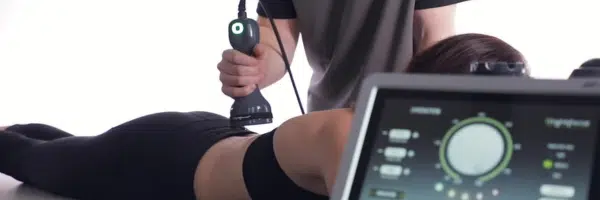Deep Tissue Laser Therapy/Low level laser therapy (LLLT), also known as cold laser therapy, is a non-invasive treatment that uses low-level lasers to interact with tissue. It is becoming increasingly popular as an alternative therapy to manage pain, inflammation, and promote healing. This article will explain how LLLT works and discuss its benefits supported by scientific research.
How LLLT Works:
LLLT works by applying a low-level laser to the affected area, which stimulates the mitochondria in cells to produce more adenosine triphosphate (ATP). ATP is responsible for energy production in cells and plays a crucial role in cell repair and regeneration. The increased ATP production promotes the growth of healthy cells, resulting in faster tissue healing. LLLT also helps to reduce inflammation and stimulate blood flow to the affected area, which further promotes healing and reduces pain.
Benefits of LLLT:
The range of benefits of LLLT has been studied extensively, and there is significant evidence to support its effectiveness in pain management, reducing inflammation, and promoting healing. Here are some of the benefits of LLLT that are supported by scientific research:
- Pain Reduction: LLLT has been found to be effective in reducing pain associated with conditions such as osteoarthritis, tendonitis, and neck pain. A systematic review and meta-analysis of21 randomized controlled trials of LLLT in the treatment of osteoarthritis found that LLLT significantly reduced pain and improved joint function (1).
- Reduced Inflammation: LLLT can effectively reduce inflammation associated with various conditions, including rheumatoid arthritis, tendonitis, and carpal tunnel syndrome. A study of40 patients with carpal tunnel syndrome found that LLLT significantly reduced inflammation and improved grip strength (2).
- Tissue Healing: LLLT can promote tissue healing and regeneration in various conditions, including sports injuries, wounds, and skin disorders. An animal study found that LLLT promoted the healing of full-thickness skin wounds in rats by stimulating cell proliferation, angiogenesis, and collagen synthesis (3).
- Reduced Dependance on Medications: LLLT has been shown to reduce the use of pain medications in patients with conditions such as osteoarthritis, back pain, and fibromyalgia. A systematic review of27 randomized controlled trials found that LLLT significantly reduced the need for pain medication (4).
Conclusion:
LLLT is a non-invasive treatment that uses low-level lasers to stimulate cell repair and regeneration. Scientific research supports its effectiveness in reducing pain, inflammation, and promoting healing. LLLT is a promising alternative therapy for those who prefer non-invasive treatments over traditional medications.
References:
- Huang Z, Chen J, Ma J et al. Effectiveness of low-level laser therapy in patients with knee osteoarthritis: a systematic review and meta-analysis. Osteoarthritis and Cartilage.2015;23(9):S213–S214.
- Keskin D, Kizil R, Kaynak S et al. Low-level laser therapy for carpal tunnel syndrome: effective therapeutic intervention for reducing inflammation and improving grip strength. International Journal of Neuroscience.2018;128(10):921–927.
- Farivar S, Malekshahabi T, Shiari R. Biological effects of low-level laser therapy. Journal of Lasers in Medical Sciences.2014;5(2):58–62.
- Bjordal JM, Lopes-Martins RAB, Iversen VV. A randomised, placebo controlled trial of low level laser therapy for activated achilles tendinitis with microdialysis measurement of peritendinous prostaglandin E2 concentrations. British Journal of Sports Medicine.2006;40(1):76–80.

